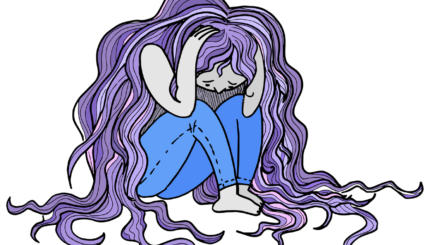In the past couple of years, the trend of college campuses offering safe spaces has taken hold. These spaces offer marginalized students a designated environment to talk freely about their experiences, emotions, mental health, and more. In this safe space, students never have to worry about facing discrimination, ridicule, or harassment.
With the rise of safe spaces has come seemingly never-ending discourse. Many feel that creating a safe space coddles students and doesn’t sufficiently prepare them for life beyond college. Others argue that it is necessary for minority students to have a space that is solely theirs to talk about their experiences.
Personally, I am in favor of safe spaces. For many students, it can be important – even vital – to have a comfortable space to be themselves. Students of color, students with mental illnesses, LGBTQ+ students, students with disabilities, religious minorities, and others are too often silenced in classroom discussions, or else end up having to defend their experiences in order to be taken seriously. For these students, having an environment which is solely theirs is comforting and empowering. In this space, no one will challenge them to a debate, try to speak over them, make them serve as a spokesperson for their entire race or gender, or attempt to invalidate their experiences- they can simply be.
A student questioning their sexuality might rely on an LGBTQ+ safe space, such as a high school or college GSA. Outside of this environment, it can be difficult- even impossible- for someone to really become confident in themselves. In an environment such as a GSA, a questioning student can find support and advice from other students coming from a similar background or identity. This is an important step in building a supportive community.
Another practice that has recently come under fire is trigger warnings. A trigger warning is a simple statement that prefaces an article, work of art, video, or other media. These inform the reader or viewer of a potentially sensitive topic within the content.
In the summer of 2016, the University of Chicago gained national attention for its controversial statement that students shouldn’t expect to find trigger warnings on their campus. Much like safe spaces, trigger warnings provide an essential function to students who struggle with past trauma or mental illness, particularly PTSD or panic disorders.
The debate about trigger warnings on college campuses is largely similar to the one about safe spaces. Many argue that avoiding sensitive subjects in the classroom will shelter students and leave them unequipped for the world beyond college. The purpose of trigger warnings isn’t to help students select which material they want to be exposed to or to allow them to steer clear of subjects they’d prefer not to discuss. Trigger warnings offer students with traumatic experiences or specific phobias an exit to a potentially disastrous discussion, saving them from panic attacks, flashbacks, and more.
Part of the problem with safe spaces and trigger warnings is the negative stigma. Safe spaces are misrepresented as echo chambers where liberal-leaning students can go to escape opposing viewpoints, or to validate their own views. Trigger warnings are often labeled as a way for “special snowflake” students to pick and choose what material they’d like to be exposed to in a classroom.
At the end of the day, the point of both of these systems is to help marginalized students, students with mental illness or trauma learn in a comfortable environment where their voices can be recognized. Safe spaces offer one of the only settings where some students can voice their opinions and experiences without contempt and without having to justify themselves. Trigger warnings let students with past trauma or panic disorders engage in a conversation about a sensitive subject at their own pace, which in the long run helps them become more comfortable with the issue.
Banning these practices won’t create a more informed or prepared student body; rather, it further isolates and silences already-marginalized voices. Institutions would never take medical resources away from a student with a physical disability or illness, so why has supporting simple measures to help mentally ill students become a national debate? It’s time to end the stigma surrounding mental health and help marginalized students and students coping with mental illness have a more comfortable learning environment.






